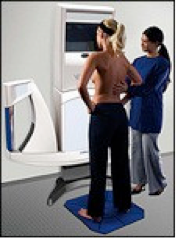Article
Setting Realistic Expectations for Plastic Surgery Outcomes
Author(s):
Here are 3 vital tools plastic surgeons use to set patients' procedure outcome expectations.

The consultative process is an immensely important step in the plastic surgery procedure experience. Patients who come to me are looking to my medical acumen and experience, but also want to be reassured that their post-procedure body is what they want and expect.
Here are 3 vital tools plastic surgeons use to set those procedure outcome expectations.
#1. Before and After Photos
The first thing most patients do when they visit a physician’s website or office for a consultation is look for pre-and post-op photos of the doctor’s prior work. It can be very helpful to check out the similarities and differences of patients who have been cared for by the doctor. The photos often reassure the potential patient that the procedure being considered can help achieve the specific goal being sought.
However, photos are 2-dimensional and we live in a 3-dimensional world. That’s why techniques like standardization of photos and use of the same makeup and backgrounds in the before-and-after images are good ways to help make these photos become more relevant to patients.
#2. 3D Imaging
No single series of pictures can truly show the difference between the pre-op situation and the post-op result. However, advancements in technology have made seeing a patient’s post-procedure outcome prior to surgery a reality. One way to clearly articulate the potential outcome of an individual’s procedure is with the ultra-resolution 3D capture system called VECTRA X3. With VECTRA X3, a patient can see highly detailed results of what their surgical or non-surgical procedure will look like during the consultation phase, so that the desired outcome is exactly what they want and expect.
VECTRA X3 provides the most advanced 3D simulation tools available on the market, so patients can quickly visualize their procedures and arrive at a realistic example of the outcome. Using Sculptor software, physicians are able to view the prospective results of patients’ procedures from all angles, which allows for a thorough review of their simulated post-surgery bodies.
First, images of the targeted body area are photographed with the Vectra 3D camera, which is similar to taking a normal photograph. Then, Sculptor software allows me to simulate the expected results of procedures such as breast augmentation, body contouring, rhinoplasty, cleft lip and palate surgery, and more. These tools allow us to accurately illustrate the volume changes after facial and breast surgery. The 3D simulator even includes skin textures so patients can see the results after a skin resurfacing or filling treatment.
Below are some images of the Vectra X3 in use and a simulated tummy tuck and breast augmentation and lift surgical outcome.


#3. Patient References
Patient references are another great tool in helping potential patients understand the outcome of their procedures. Seeing a previous patient in person who’s had the same procedure is something I recommend frequently in my consultations. I am fortunate that many of my patients have volunteered to speak and meet with prospective patients, which provides a realistic view of what was achieved and a firsthand account of the entire process from surgery to recovery. Direct contact from someone who has undergone the procedure in question is incredibly valuable.
Improvements in the way I educate my patients before they agree to undergo procedures means happier and more satisfied patients after surgery, which is the ultimate professional goal.
Robert T. Grant, MD, MSc, FACS, is Chief of the combined Divisions of Plastic Surgery at New York-Presbyterian Hospital-Columbia University Medical Center and New York-Presbyterian Hospital-Weill Cornell Medical Center. He is also Associate Clinical Professor of Surgery in the College of Physicians and Surgeons at Columbia University and Adjunct Associate Professor of Clinical Surgery at Weill Cornell Medical College. For more information about Dr. Grant or to contact him, visit his website at www.robertgrantmd.com.





